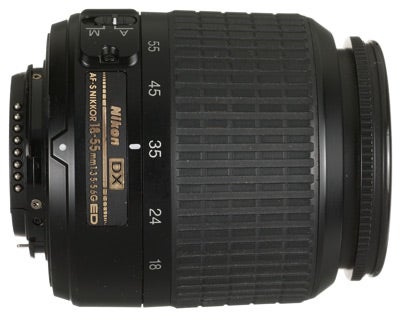Nikon optics have a good reputation, and this lens, while not perfect, stands out from the crowd...
Nikon AF-S 18-55mm f/3.5-5.6G ED Review
The lens is constructed from seven elements in five groups, and includes an aspherical lens. Minimum focus is 28cm, while the minimum aperture is f/22 at the wide end and and f/36 at the tele. The Nikkor 18-55mm uses plastic throughout its construction, including the lens mount, while the large rubberised zoom ring feels secure, with the zoom action smooth and quick. When focusing, the optics are moved by Nikon’s Sonic Wave Motor, making this a very quiet lens as well as a fast focuser. In AF mode you are unable to manually focus, so need to switch to the M position if you need to fine-tune.
Image Quality
Nikon optics have a good reputation, and this lens, while not perfect, stands out from the crowd. It’s not what we’d call superb, but in terms of sharpness it offers high resolution at both ends of the focal range. It also controls chromatic aberration well, especially at 55mm. Distortion is well controlled too, although there is some barrelling and pin cushioning at the extremes.





